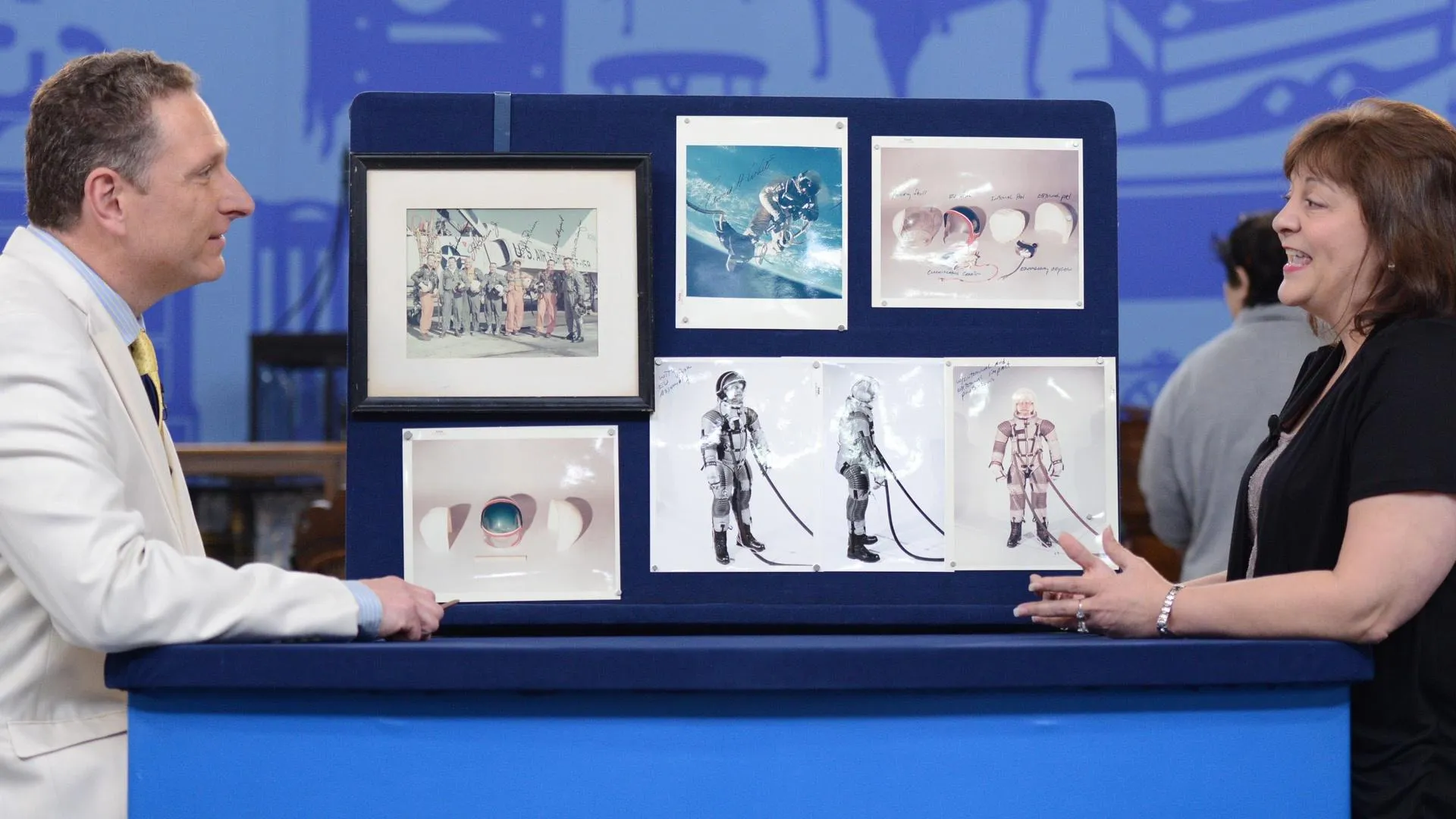GUEST: I brought this gun that was in my great-great- grandmother's house at the end of the Civil War. That's really all I know about it. She lived, I believe, in Mississippi, and the story is it was left there by a Union soldier.
APPRAISER: Okay, and what kind of gun is it?
GUEST: Well, from the name on it, I've discovered it's a Marbury carbine.
APPRAISER: We're close, it's a Maynard carbine.
GUEST: Maynard!
APPRAISER: And on front we have "Maynard, Washington, D.C."
GUEST: Right.
APPRAISER: Maynard was an inventor, an amazing inventor. He had so many patents for firearms and firearms improvements. This is one that he's best known for. You remember the old cap guns that had the primer tape that rolled up, that popped?
GUEST: Yeah.
APPRAISER: Maynard helped develop that. If we open this door, we actually see on the inside the little wheel. You put the roll of caps in there. As you cock the hammer back, it'll rotate those up, which works great if two things don't happen: if the wheel doesn't break, like this one has, or if they get wet. Either happens, you're out of luck. So, it was a cool thing on paper, but once you got in the field, it didn't hold true. They tried it on several guns. The government actually liked the idea so much that they paid him quite a substantial sum to use his patent. And one thing that we have on the inside of the door is the serial number of 2406, which is important. The first few hundred went to the U.S. government. From there, a lot of the guns went South.
GUEST: Okay.
APPRAISER: They were sold right at that gap where everybody knew war was coming, but they were still selling stuff to the South.
GUEST: Okay.
APPRAISER: And some of them went straight from Maynard and some of them were sold through a retailer in New York. Unfortunately, we don't have those exact serial numbers, so we can say that this one is in the range that could be a Southern gun.
GUEST: Okay.
APPRAISER: Most of these guns were made, though, in 1858, 1859. They're really cool guns because they're .50 caliber, but they used them almost like a sharp-shooter's gun, and that's what this is on the back. We actually have the long-range sight.
GUEST: Right.
APPRAISER: The front one is a steady sight for 200 yards, and this one is adjustable for long range. It's nice that this is on. You can imagine it doesn't take a lot for that thing to pop off. The gun is very crusty.
GUEST: Yeah! (laughing)
APPRAISER: But it's crusty beautiful!
GUEST: Okay.
APPRAISER: When you look at a gun like that, you know it was there, you know it saw service, and to a collector, we get that feeling, "When I'm holding this, I'm holding history."
GUEST: Oh, yeah.
APPRAISER: Which is a wonderful thing. Have you ever had the gun appraised?
GUEST: No, no, it hung in my parent's home over the mantel for 30 years probably, and then has been in a closet.
APPRAISER: Any gut feeling as to what it would be worth?
GUEST: I did a little bit of research, and it said like $2,000, $3,000, something like that. That's... I mean, that's it, that's all I know.
APPRAISER: Right. Well, when you look at it, it does have that crusty appearance. It's a gun that we'd be looking for an insurance value, because I assume coming out of the family, you wouldn't be interested in selling it.
GUEST: Absolutely not.
APPRAISER: In today's world, this is a gun that I would insure for about $4,000.
GUEST: Okay, that's great!
APPRAISER: Did you ever open the little box on the back?
GUEST: No, I tried and I couldn't open it.
APPRAISER: Well, this is called a patch box, and what's cool about this one, we pop that open, it has a spare nipple, and that's what the percussion cap or the tape primer would roll up onto to cause the firing. This one used one that's different than anything else.
GUEST: Okay.
APPRAISER: It's got a spare in there, and that little spare is worth about $250.
GUEST: And it's in there?
APPRAISER: It's in there.
GUEST: That's cool.
APPRAISER: A little bonus.
GUEST: That's cool!











